The Complete Guide to Fertilizing Succulents
Succulents have gained immense popularity for their striking appearance and minimal care requirements. While these hardy plants are known for thriving in poor soil conditions, providing them with appropriate nutrients can significantly enhance their growth, color, and overall health. This comprehensive guide will explore everything you need to know about fertilizing succulents—from understanding their nutritional needs to choosing the right products and implementing an effective feeding schedule.
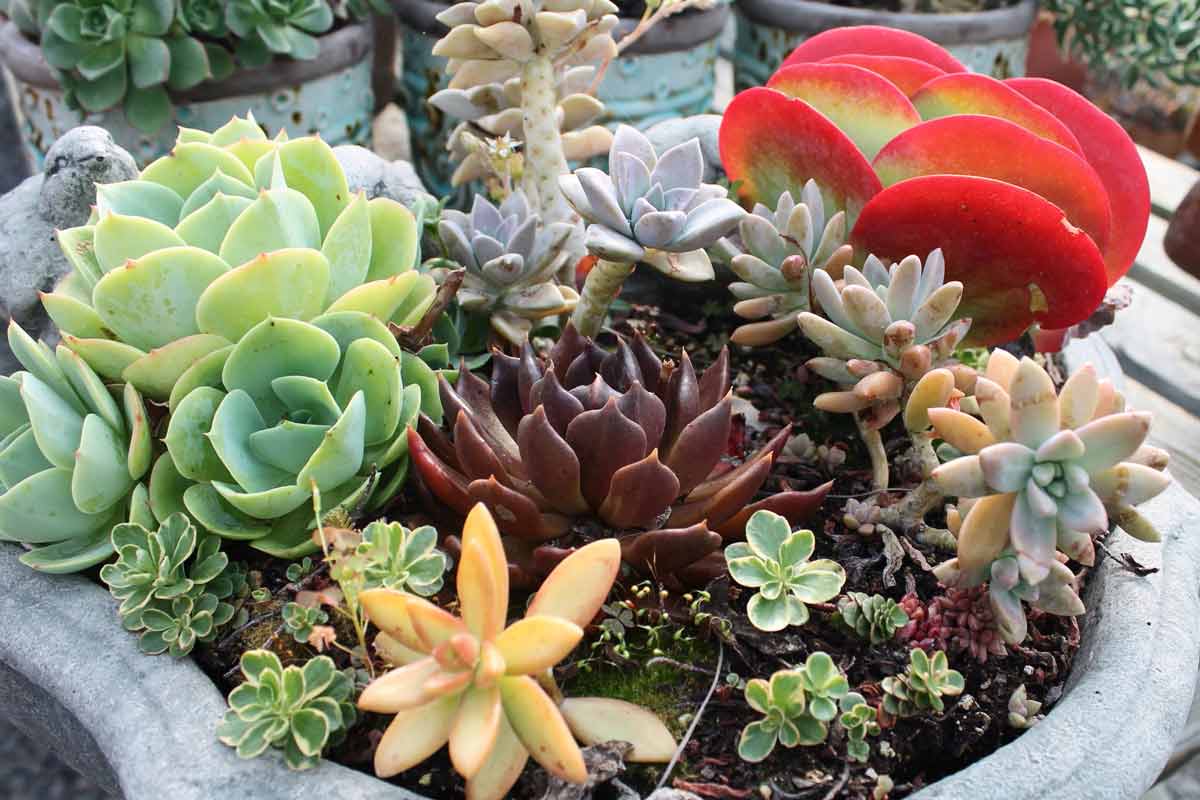
Contrary to popular belief, succulents do benefit from fertilization, especially when grown in containers where nutrients eventually become depleted. The key to successful succulent fertilization lies not in quantity but in using the right type of fertilizer at appropriate intervals. With the guidance provided in this article, you'll be able to develop a fertilization strategy that helps your succulents thrive without risking the common pitfalls of over-fertilization.
Do Succulents Really Need Fertilizer?
In their natural habitats, many succulents evolve in nutrient-poor, rocky or sandy soils. This evolutionary history has equipped them with remarkable efficiency in nutrient utilization. However, this doesn't mean they don't benefit from fertilization, particularly in cultivation settings where:
- Potting media gradually loses nutrients through watering
- Plants are contained in a limited volume of soil
- Growth conditions might be optimized in other ways (water, light)
While succulents can survive without supplemental fertilizer, they won't necessarily thrive. Properly fertilized succulents typically display:
- More vibrant coloration
- Increased growth rates
- Better resistance to pests and diseases
- More prolific flowering
- Improved overall vigor

The distinction between survival and thriving is particularly important for collectors seeking optimal coloration, form, and health in their succulent collections. That said, the mantra for succulent fertilization should always be "less is more"—these plants are far more likely to suffer from over-fertilization than under-fertilization.
Understanding NPK and Succulent Nutritional Needs
Fertilizers typically display three numbers representing the NPK ratio—nitrogen (N), phosphorus (P), and potassium (K). Understanding what each nutrient provides helps in selecting the right fertilizer for succulents:
- Nitrogen (N): Promotes leaf and stem growth. Too much nitrogen causes succulents to grow quickly but become weak and elongated.
- Phosphorus (P): Supports root development and flowering. Particularly important during blooming periods.
- Potassium (K): Enhances overall plant health, disease resistance, and drought tolerance.
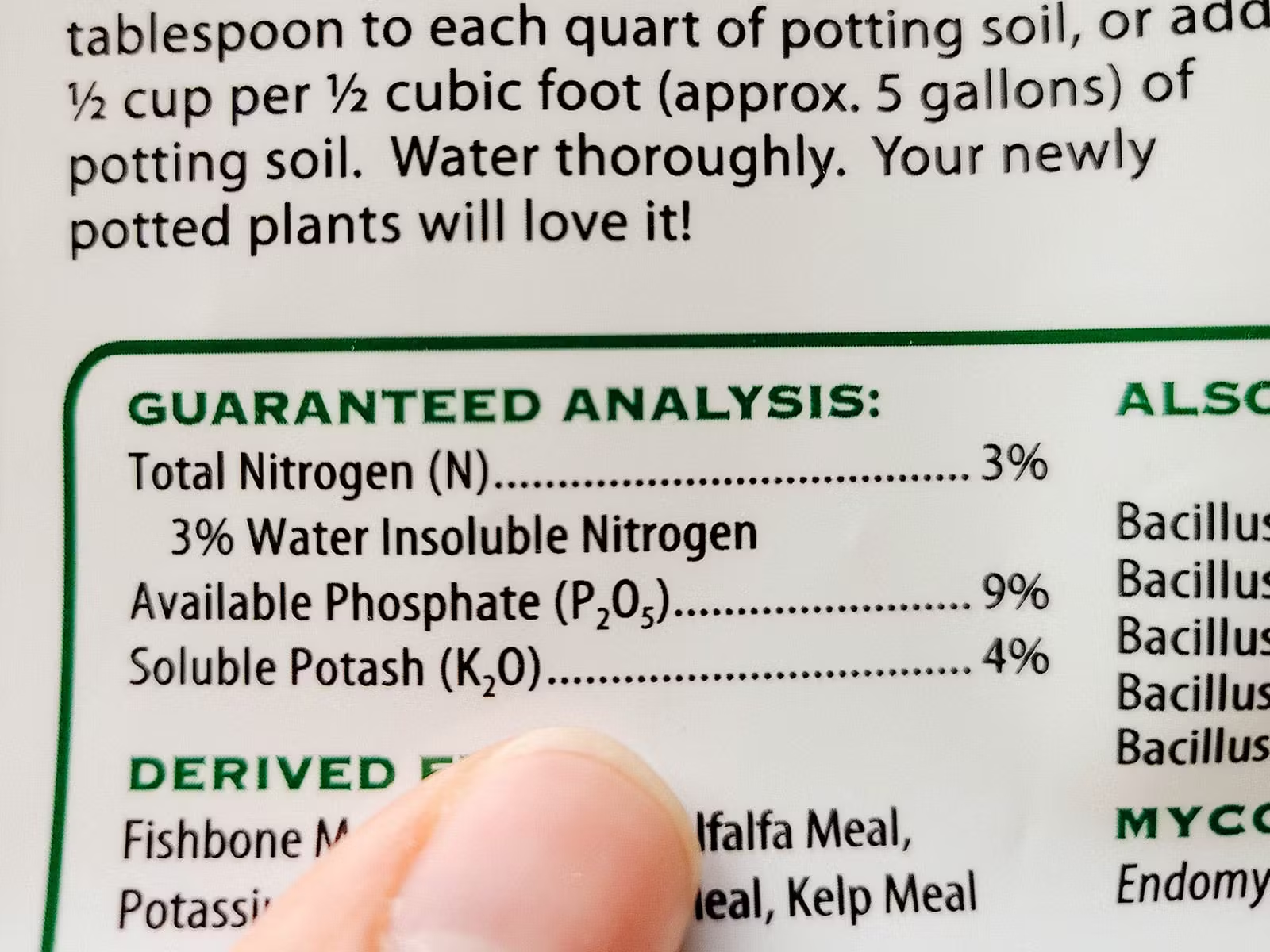
The ideal NPK ratio for most succulents is balanced or slightly lower in nitrogen. Ratios such as 10-10-10, 8-8-8, or 5-10-10 work well. Fertilizers with equal parts NPK or higher phosphorus and potassium relative to nitrogen help prevent the leggy growth that can occur with high-nitrogen formulas.
Beyond the primary NPK nutrients, succulents also benefit from micronutrients including:
- Calcium (Ca): Strengthens cell walls
- Magnesium (Mg): Essential for chlorophyll production
- Iron (Fe): Important for healthy green coloration
- Manganese (Mn): Assists in photosynthesis
Complete or balanced fertilizers that include trace elements typically provide these micronutrients, though specific supplements can address deficiencies if they appear.
Types of Fertilizers for Succulents
Selecting the right fertilizer type is crucial for succulent health. The major categories include:
1. Liquid Fertilizers
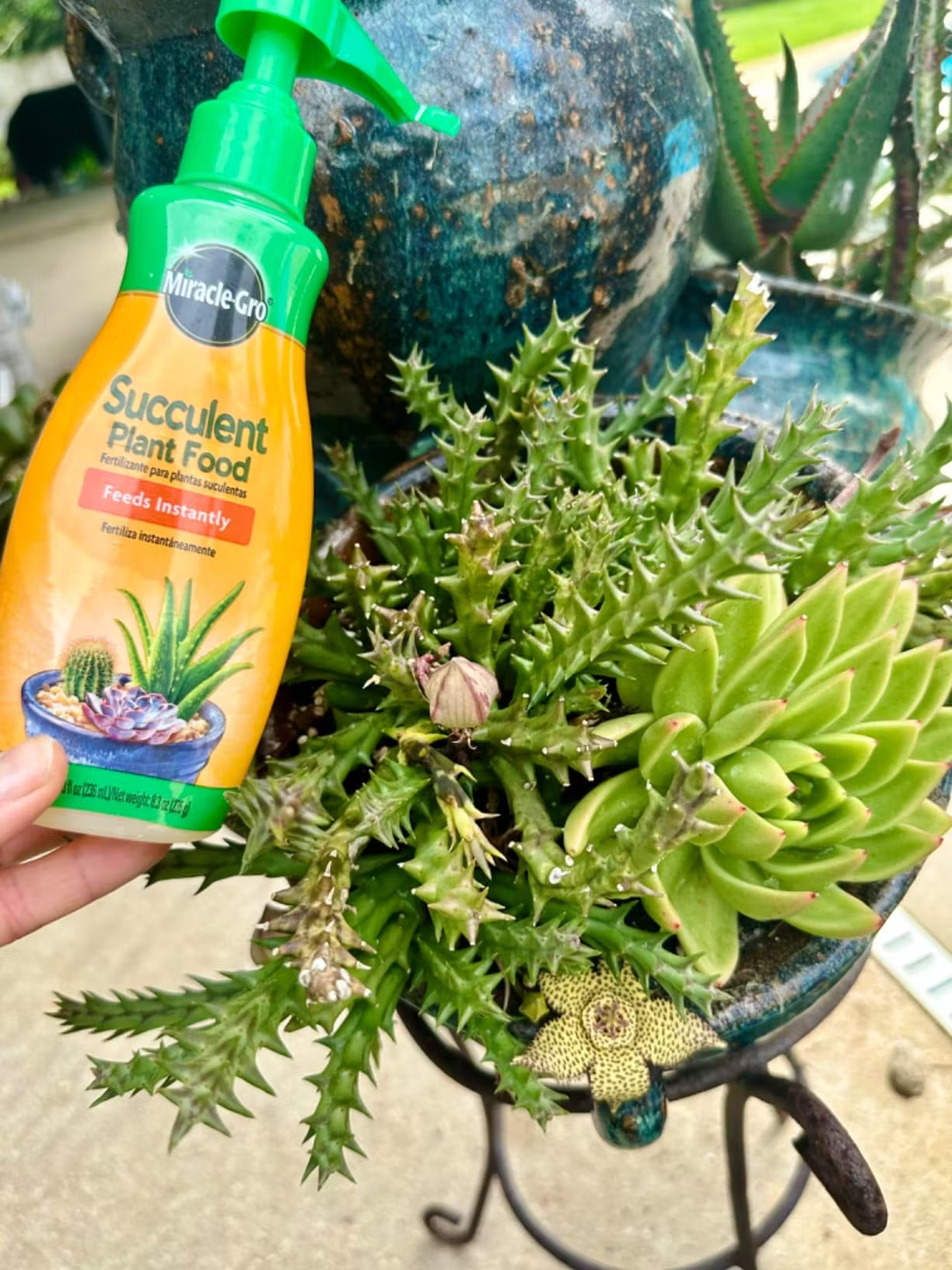
Liquid fertilizers are often the preferred choice for succulents due to their versatility and ease of dilution. These water-soluble products are typically added to irrigation water at a significantly reduced strength compared to label recommendations for regular plants.
Benefits of liquid fertilizers include:
- Easy to dilute to quarter or half strength
- Quick nutrient availability
- Precise control over application
- Even distribution throughout the soil
2. Slow-Release Granular Fertilizers
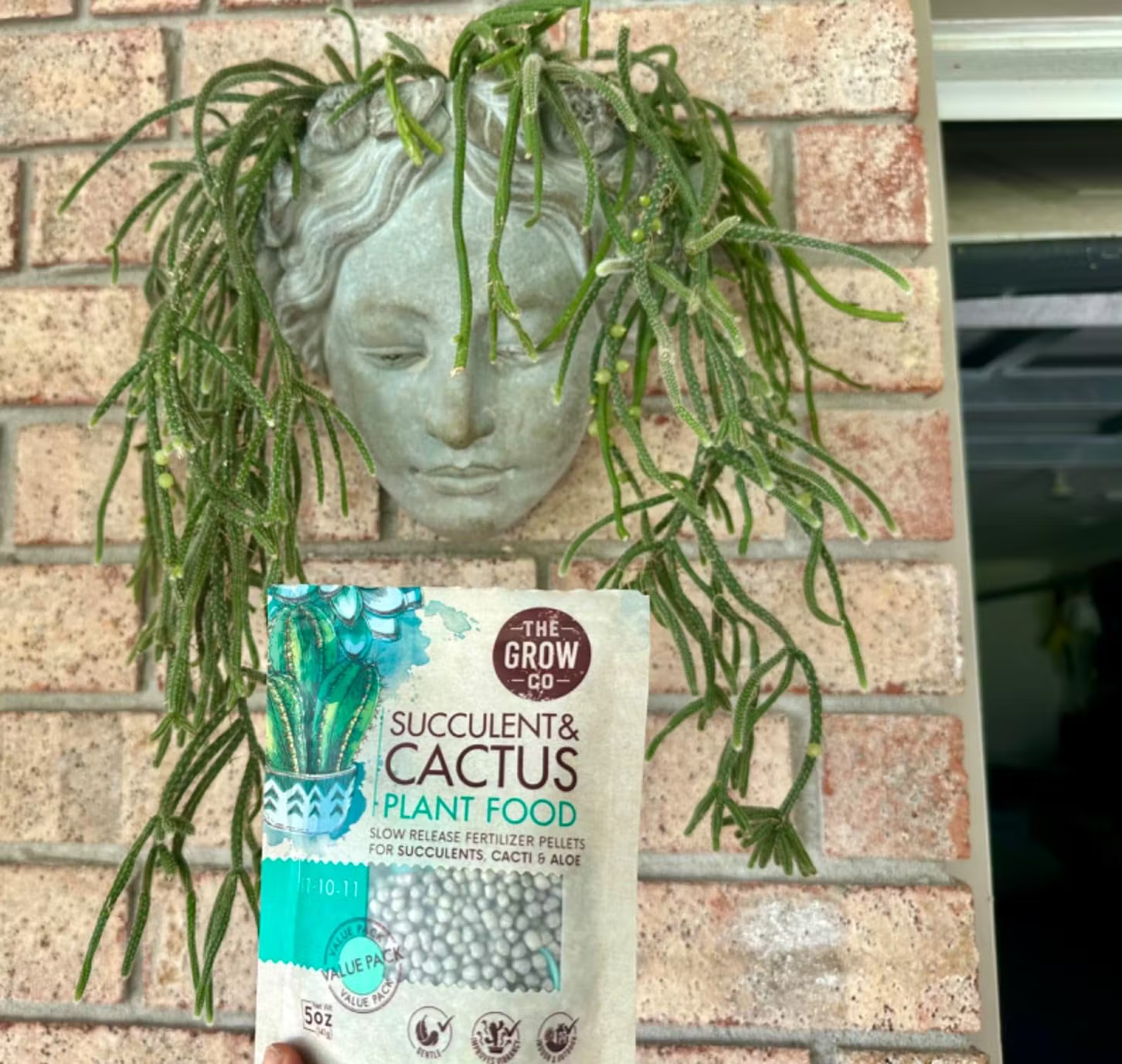
These pellets or prills release nutrients gradually over time (typically 3-6 months), offering a low-maintenance approach to fertilization. For succulents, slow-release options should be used sparingly—about half the recommended amount for regular plants.
Advantages of slow-release fertilizers:
- Reduced risk of over-fertilization
- Less frequent application needed
- Constant low-level nutrient supply
3. Organic Fertilizers
Organic options such as worm castings, compost tea, fish emulsion (highly diluted), and specialized organic cactus/succulent fertilizers offer a gentler approach with additional soil-improving benefits. These are excellent choices for beginners as they reduce the risk of fertilizer burn.
Benefits of organic fertilizers for succulents:
- Reduced risk of nutrient burn
- Improved soil structure
- Addition of beneficial microorganisms
- Environmentally sustainable approach
4. Specialized Cactus/Succulent Fertilizers
These purpose-formulated products typically feature the ideal NPK ratios for succulents and cacti, often with lower nitrogen and higher phosphorus and potassium. Many also include the appropriate micronutrients in forms readily available to desert plants.
| Fertilizer Type | Pros | Cons | Best For |
|---|---|---|---|
| Liquid | Precise control, easy dilution | Requires more frequent application | Most succulent collections, especially rare varieties |
| Slow-Release | Convenient, long-lasting | Less control over strength | Low-maintenance collections, outdoor plantings |
| Organic | Gentle, improves soil health | Variable nutrient content, may have odors | Beginners, environmentally-conscious growers |
| Specialized | Ideal nutrient ratios for succulents | Often more expensive | Dedicated collectors, challenging species |
When and How Often to Fertilize Succulents
Timing is crucial when fertilizing succulents. Unlike many houseplants that benefit from year-round feeding, succulents have distinct growing and dormancy periods that should guide your fertilization schedule.
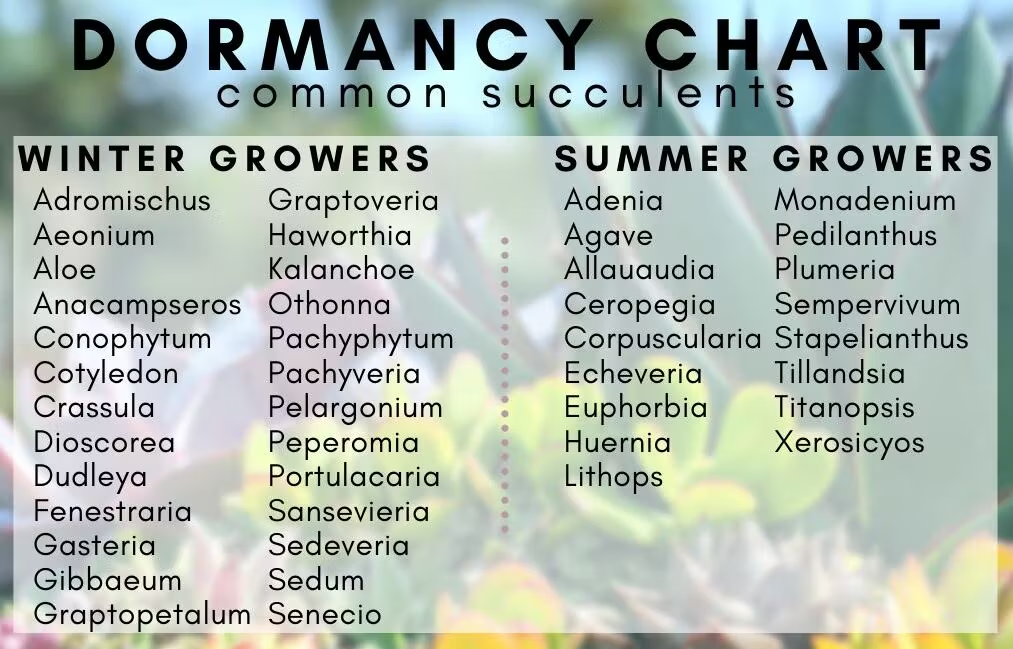
Most succulents experience active growth during spring and fall, with slowdowns during the extreme temperatures of summer and winter. However, this varies significantly by species:
- Summer-dormant succulents: Many Aeoniums, some Aloes, and certain Haworthias slow or stop growing during hot summer months.
- Winter-dormant succulents: Most Echeverias, Crassulas, and many other common varieties have reduced growth in winter.
- Year-round growers: Some varieties, particularly when grown indoors in climate-controlled environments, may grow slowly but continuously.
The general rule is to fertilize only during active growth periods and withhold fertilizer during dormancy. For most succulents, this translates to:
Spring (March-May)
Fertilize: Yes, begin as days lengthen and growth resumes
Frequency: Once a month
Strength: ¼ to ½ recommended strength
Summer (June-August)
Fertilize: Depends on species and climate
Frequency: Reduce or stop for summer-dormant species
Strength: ¼ strength if continuing
Fall (September-November)
Fertilize: Yes, as temperatures moderate
Frequency: Once a month until growth slows
Strength: ¼ to ½ recommended strength
Winter (December-February)
Fertilize: No, for most varieties
Frequency: Withhold until spring
Strength: N/A
For indoor succulents under grow lights or in consistently warm environments, a reduced fertilization schedule may continue year-round, but always at decreased frequency and strength during natural dormancy periods.
Expert Tip
Always fertilize after watering, never on dry soil. Apply fertilizer to slightly damp soil to prevent root burn and ensure even nutrient distribution. This "watering before feeding" rule is especially important for succulents with sensitive root systems.
How to Fertilize Succulents Properly
The application method is just as important as the fertilizer choice. Follow these steps for safe and effective succulent fertilization:
Step 1: Prepare Properly Diluted Solution
For liquid fertilizers, dilute to ¼ to ½ the strength recommended on the package. For example, if the directions suggest 1 teaspoon per gallon for regular plants, use ¼ to ½ teaspoon per gallon for succulents.
Step 2: Water First, Then Fertilize
Always water your succulents thoroughly a day or two before fertilizing. This ensures the roots are hydrated and less susceptible to fertilizer burn. Never apply fertilizer to completely dry soil.
Step 3: Apply Evenly
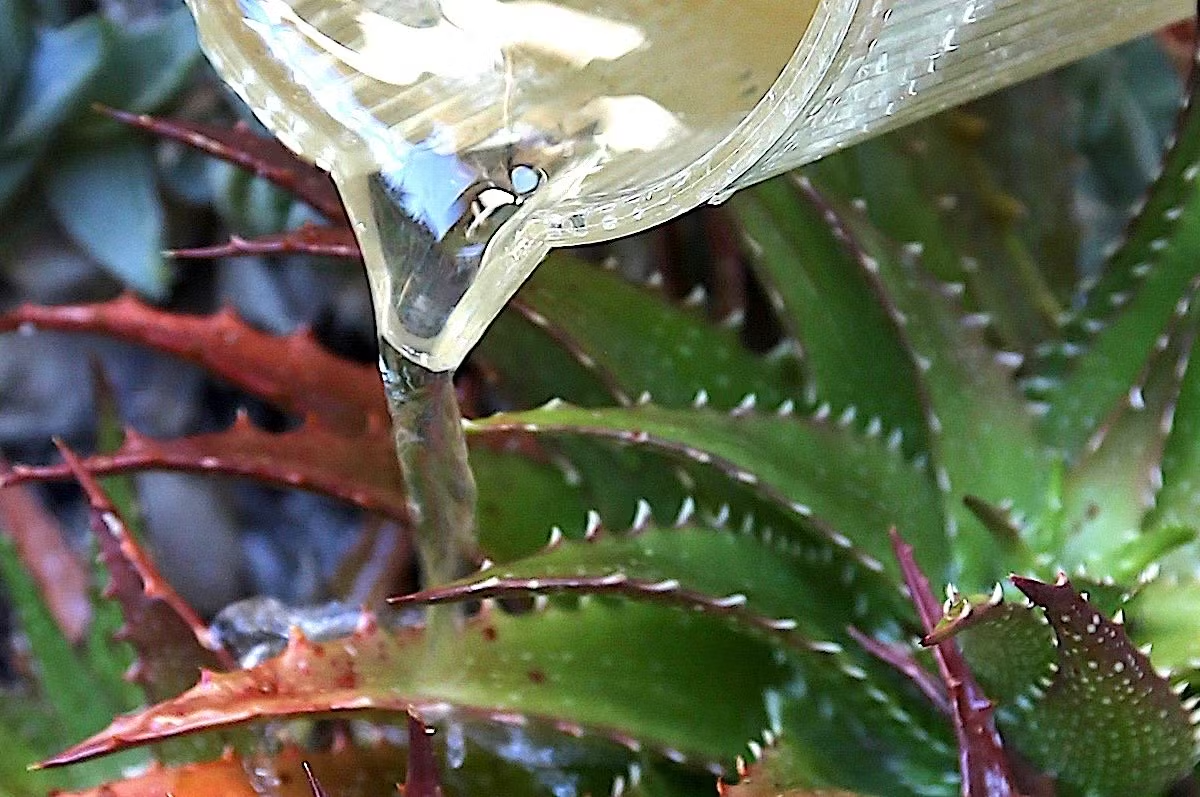
For liquid fertilizers, apply the solution as you would regular water, ensuring even distribution throughout the pot. For granular or slow-release formulations, sprinkle the reduced amount evenly around the base of the plant, avoiding direct contact with stems or rosettes.
Step 4: Observe and Adjust
Watch your plants for 2-3 weeks after fertilizing to monitor their response. Signs of over-fertilization include:
- Leaf burn (brown or black spots)
- Salt buildup on soil or rim of pots
- Unusually rapid, leggy growth
- Wilting despite adequate water
If you notice any of these symptoms, flush the soil thoroughly with plain water and reduce the concentration or frequency of future fertilizer applications.
Special Considerations for Different Succulent Types
While general principles apply to most succulents, certain varieties have unique nutritional needs:
1. Cacti
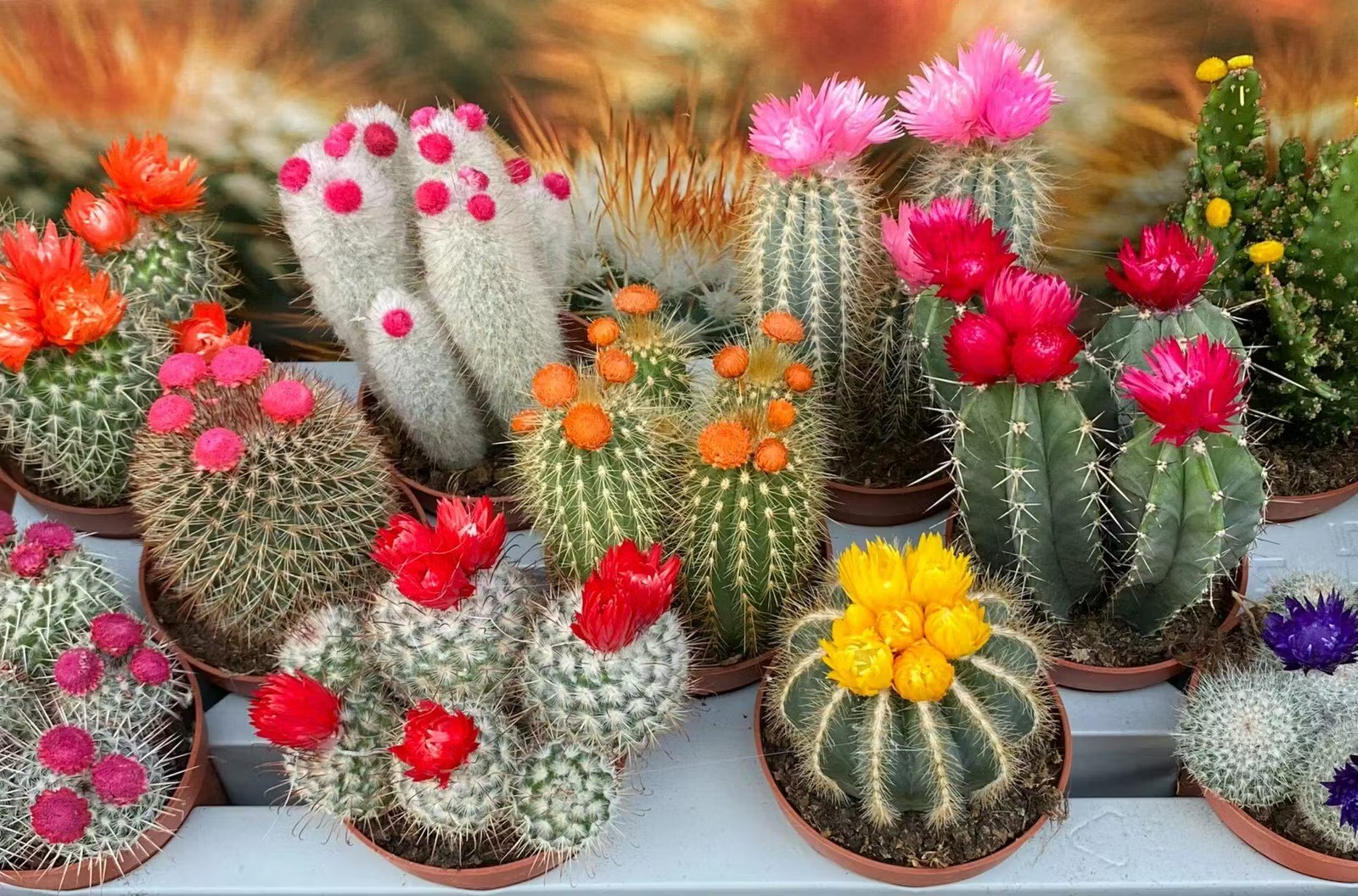
Cacti typically require even less fertilizer than other succulents. Use a higher phosphorus formula (such as 5-10-5) in early spring to encourage blooming. Many growers fertilize cacti just once or twice a year at quarter strength.
2. Lithops and Other Mesembs
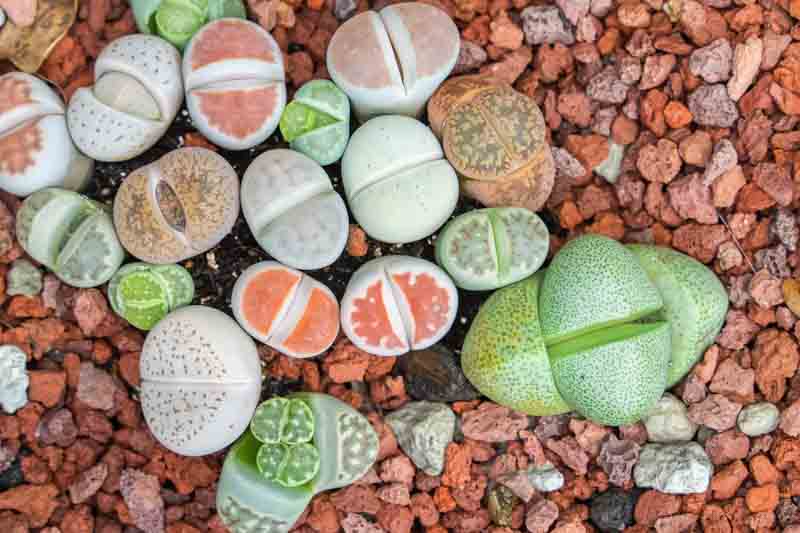
These "living stones" and similar mesembs require extremely minimal fertilization. Many expert growers provide only a single, very dilute feeding (⅛ strength) after their split and regrowth cycle completes, typically in spring or early summer.
3. Epiphytic Succulents
Epiphytic cacti (like Christmas and Easter cacti), some Rhipsalis species, and certain orchid cacti naturally grow on trees rather than in soil. These plants benefit from specialized orchid fertilizers at ¼ strength during active growth.
4. Succulent Arrangements
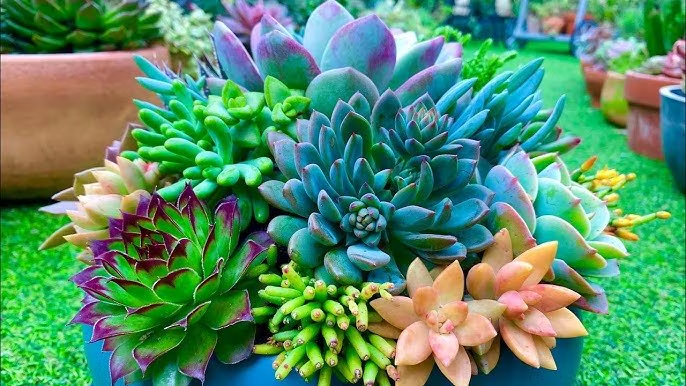
Mixed arrangements present a challenge as they often contain species with different growth cycles. In these cases, follow the needs of the most sensitive plants, typically fertilizing at the lowest common denominator—light feeding in spring and fall only.
DIY Fertilizer Options for Succulents
Commercial fertilizers aren't the only option for nourishing your succulents. Several household ingredients can provide gentle nutrition:
Worm Casting Tea
Create a "tea" by soaking 1 cup of worm castings in 1 gallon of water for 24-48 hours, stirring occasionally. The resulting liquid can be used as a gentle, balanced fertilizer.
Eggshell Fertilizer
Rinse, dry, and crush eggshells to a fine powder. Sprinkle a small amount (½ teaspoon) on the soil surface or mix into the top layer. Eggshells provide calcium that helps strengthen cell walls.
Diluted Aquarium Water
Water from established fish tanks can provide trace nutrients beneficial to succulents. Use it for occasional watering, ensuring it's free from additives and chemicals.
Banana Peel Water

Soak dried banana peels in water for 1-2 days, then use the resulting liquid (diluted further 1:1 with water) as a potassium-rich fertilizer ideal for flowering succulents.
Important Note on DIY Options
Homemade fertilizers have variable nutrient content and should be used sparingly. Always observe your plants closely after application and discontinue use if any negative reactions occur.
Common Fertilization Mistakes to Avoid
Even experienced growers can make these common errors when fertilizing succulents:
1. Over-fertilizing
The most frequent mistake is applying too much fertilizer or fertilizing too often. Symptoms include salt buildup, leaf burn, distorted growth, and in severe cases, plant death. Remember that succulents evolved to thrive with minimal nutrients—less is genuinely more.
2. Fertilizing During Dormancy
Applying fertilizer when plants are dormant can stress them unnecessarily. Learn the growth cycles of your specific varieties and withhold fertilizer during their rest periods.
3. Using High-Nitrogen Formulas
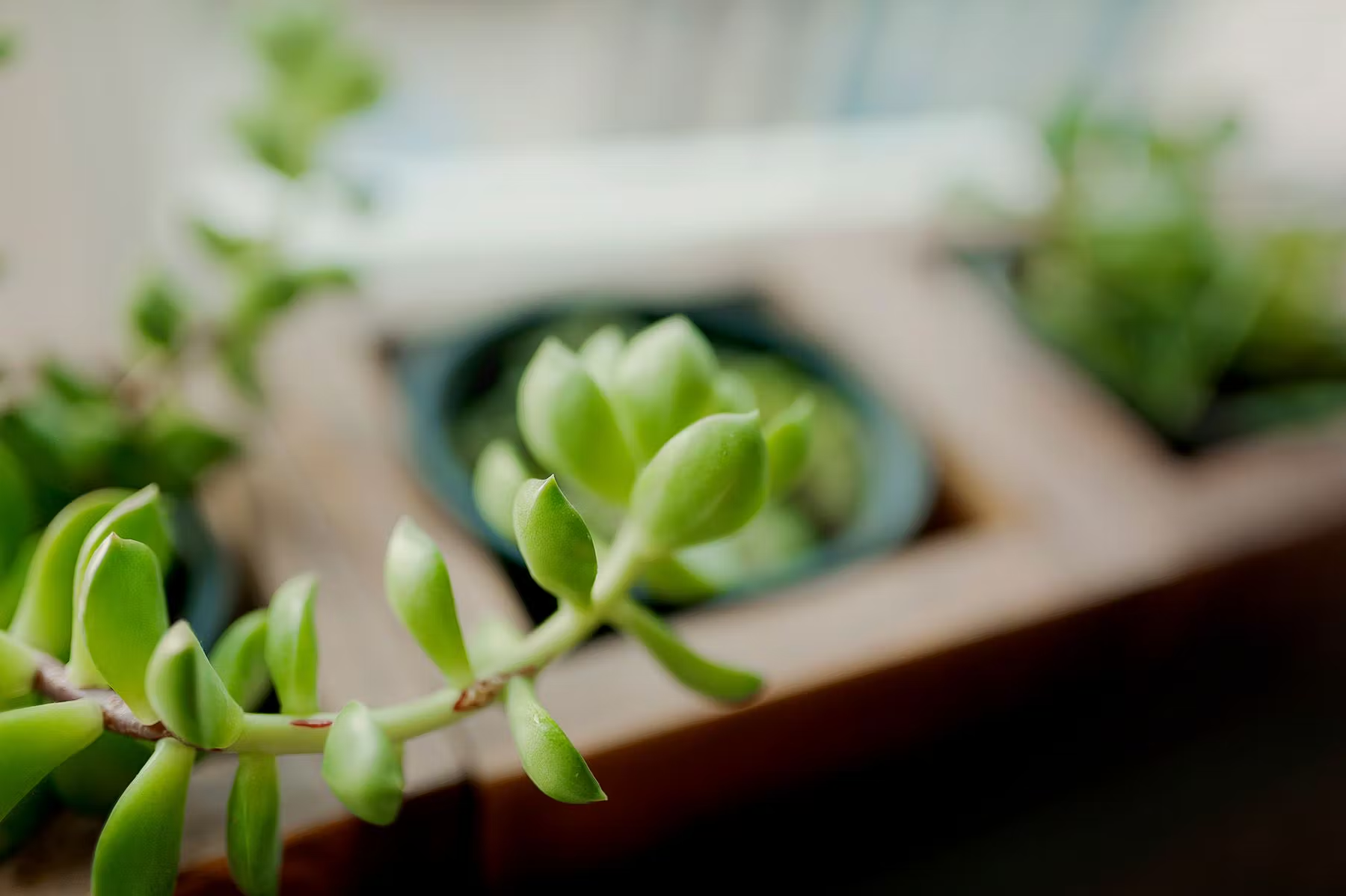
Fertilizers with high nitrogen ratios (first number significantly higher than the others) cause rapid, weak growth in succulents, destroying their natural compact form. Always choose balanced or low-nitrogen formulations.
4. Fertilizing Newly Potted or Sick Plants
Wait at least 2-4 weeks after repotting before fertilizing to allow roots to recover from transplant stress. Similarly, never fertilize plants showing signs of stress, pest infestation, or disease—address these issues first.
5. Using Non-Diluted Fertilizer
Applying fertilizer at full strength, even those marketed for cacti and succulents, can overwhelm these efficient plants. Always dilute to ¼ to ½ the recommended strength.
Conclusion: A Balanced Approach to Succulent Fertilization
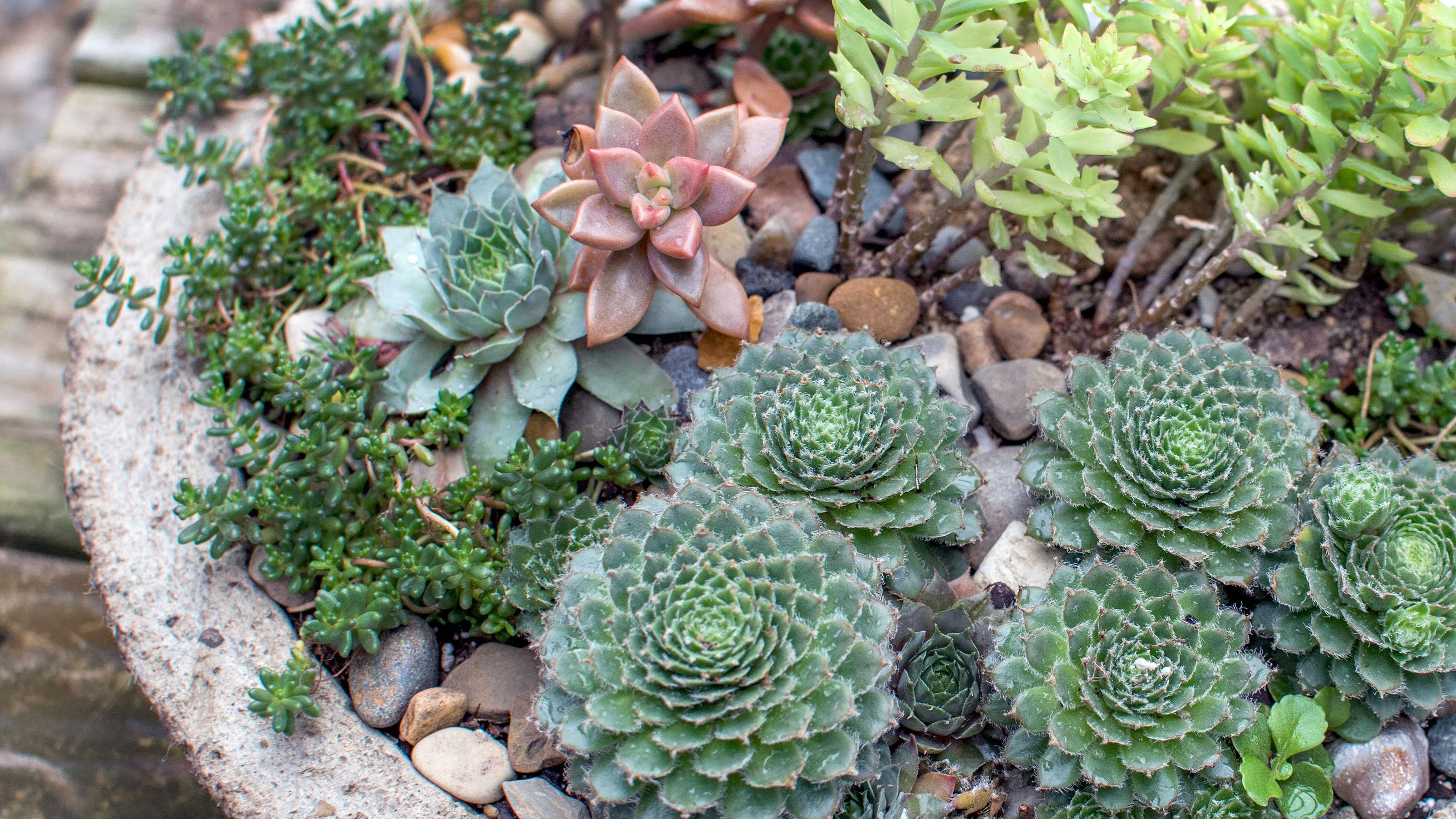
Fertilizing succulents requires a delicate balance—providing enough nutrients to enhance growth and appearance without overwhelming these naturally frugal plants. The key principles to remember are:
- Dilute fertilizers significantly (¼ to ½ strength for most varieties)
- Apply only during active growth periods, respecting dormancy cycles
- Choose balanced or low-nitrogen formulations with appropriate micronutrients
- Always fertilize after watering, never on dry soil
- Observe plants closely and adjust your approach based on their response
By following these guidelines and approaching fertilization with restraint, you'll enhance the natural beauty and vigor of your succulent collection while avoiding the common pitfalls that can damage these remarkable plants. Remember that succulents have thrived for millennia in challenging conditions—they need our support, not our excess.
With proper fertilization complementing appropriate light, soil, and watering practices, your succulents will reward you with vibrant colors, distinctive forms, and the occasional spectacular bloom that makes these plants so captivating to collectors worldwide.